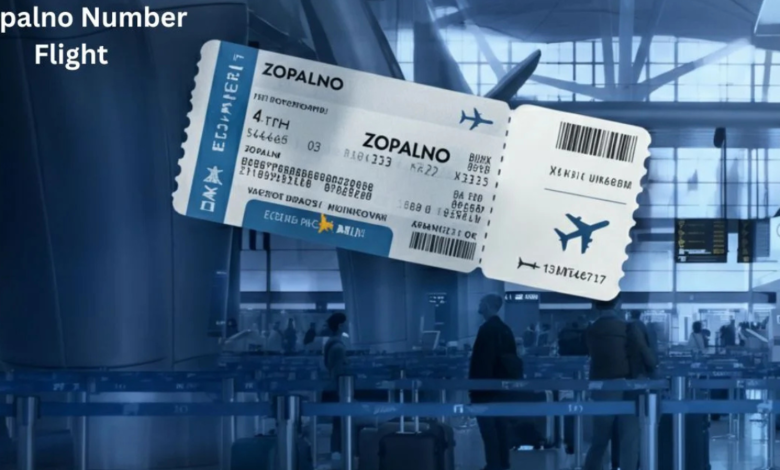Zopalno Number Flight: Everything You Need to Know

Understanding the Concept of Zopalno Number Flight
The term “zopalno number flight” might not be widely recognized, but it is an intriguing phrase that sparks curiosity. Whether it relates to a specific aviation system, a unique numbering mechanism, or an innovative tracking method, this term carries weight in different contexts. Flights are generally assigned numbers based on airline schedules, routes, and operational factors, but if “zopalno number flight” refers to a distinct categorization, it deserves a deep dive.
Flights operate under specific numbering systems that help airlines, air traffic controllers, and passengers identify routes efficiently. A structured numbering system ensures that flight details remain unambiguous. If “zopalno number flight” introduces a new layer to this, exploring its significance can provide valuable insights into modern aviation.
The Role of Flight Numbers in Air Travel
Flight numbers are assigned for organizational and identification purposes. Airlines use flight numbers to classify departures, arrivals, and routes. These numbers are crucial for scheduling and safety procedures. They also allow passengers to track flights easily through airline websites and airport boards.
A flight number generally consists of an airline code followed by a numerical value. This code indicates the airline operating the flight, while the number signifies the specific route. If “zopalno number flight” introduces a unique approach to this system, it could mean an evolution in how flights are categorized, monitored, or recorded.
Potential Meaning Behind Zopalno Number Flight
The phrase “zopalno number flight” might imply a distinct classification system in aviation. This could be related to a special category of flights, a security-based numbering system, or a proprietary method used by specific airlines. If this term represents a system for handling confidential or high-priority flights, it could introduce an added level of security to air travel.
Airlines often use internal coding systems to manage specific flights that are not publicly listed. These flights could belong to government agencies, VIP transport, or emergency evacuations. If “zopalno number flight” is associated with such operations, understanding its application would be crucial for aviation enthusiasts and professionals alike.
How Airlines Assign Flight Numbers
Each airline follows a specific methodology when assigning flight numbers. While some numbers might seem random to passengers, there is a logic behind the selection. Lower numbers are often used for long-haul international flights, while domestic flights tend to have higher numbers. In some cases, airlines reserve special numbers for inaugural flights or promotional campaigns.
If “zopalno number flight” is linked to a specialized numbering convention, it could indicate a shift in how flight identification is managed. This could involve a more efficient way to categorize flights based on time, distance, or operational factors. Such an approach would enhance tracking capabilities and overall airline efficiency.
Security Implications of Flight Numbering
Flight numbers also play a role in aviation security. Certain numbers are retired following major incidents, and some numbers are avoided due to superstitions or cultural beliefs. If “zopalno number flight” represents an advanced security feature, it could mean airlines are adopting a new strategy to prevent confusion or misidentification.
Aviation authorities continuously update security measures to enhance passenger safety. Numbering strategies contribute to these efforts by ensuring that flight information remains accurate and up-to-date. If “zopalno number flight” involves an undisclosed security system, it could serve as a protective measure for high-profile or sensitive operations.
The Impact of Technology on Flight Numbering
Advancements in technology have transformed the way flights are numbered and tracked. Airlines now use sophisticated software to manage scheduling and route optimization. If “zopalno number flight” refers to a tech-driven approach, it could involve AI-based numbering systems or real-time flight tracking enhancements.
Digital platforms allow passengers to check flight status instantly. The integration of machine learning and automation ensures that flight information remains precise. If the concept of “zopalno number flight” involves an innovative tech application, it could mark a step toward a smarter and more efficient aviation industry.
The Evolution of Flight Numbering Systems
Flight numbering has evolved over the decades to accommodate growing air traffic. Airlines must follow international regulations while maintaining internal consistency. The use of specific prefixes, suffixes, or special designations can help differentiate flights more effectively.
If “zopalno number flight” introduces a new framework, it could be a response to increasing aviation demands. With more flights taking to the skies each day, improving categorization methods is essential for air traffic management. A refined numbering system could also enhance coordination between airports and airline operators.
How Passengers Benefit from Structured Flight Numbering
Passengers rely on flight numbers for a seamless travel experience. A well-organized numbering system ensures that travelers can easily locate their flights, understand schedule changes, and receive real-time updates. If “zopalno number flight” offers a more intuitive approach, it could lead to improved passenger convenience.
Better flight identification minimizes confusion and reduces the chances of missed connections. With clear and distinct numbers, passengers can track their journeys effortlessly. If this term introduces an innovative approach, it could redefine how travelers interact with airline scheduling systems.
Airline Industry Perspectives on Flight Numbering
From an airline perspective, flight numbers serve multiple purposes. They help airlines manage fleets, coordinate crew assignments, and optimize operational efficiency. A systematic approach to flight numbering ensures that airlines can maintain order despite handling thousands of flights daily.
If “zopalno number flight” emerges as a new standard, it would be interesting to see how airline executives and aviation regulators respond. Any change in flight numbering must align with industry best practices to ensure a smooth transition. If this concept gains traction, it could lead to widespread adoption across major carriers.
The Future of Flight Identification
The future of flight numbering is likely to involve automation, enhanced security, and AI-driven processes. Airlines are constantly looking for ways to improve efficiency and customer experience. If “zopalno number flight” represents a futuristic approach to identification, it could lead to smarter and more adaptive aviation systems.
Innovations in aviation technology continue to reshape the industry. From biometric boarding passes to real-time data tracking, airlines are embracing digital advancements. If flight numbering evolves further, it will play a critical role in streamlining global air travel operations.
Final Thoughts on Zopalno Number Flight
The phrase “zopalno number flight” may not be widely known, but its implications could be significant. Whether it pertains to a novel numbering system, a security feature, or a tech-driven advancement, exploring its meaning can offer valuable insights into modern aviation. Flight numbers serve as the backbone of airline operations, ensuring order, security, and efficiency.
As the aviation industry continues to grow, improvements in flight categorization will be essential. If “zopalno number flight” introduces a game-changing concept, it could redefine how airlines and passengers interact with flight data. Whether through enhanced tracking, security, or operational efficiency, this term has the potential to shape the future of air travel.
